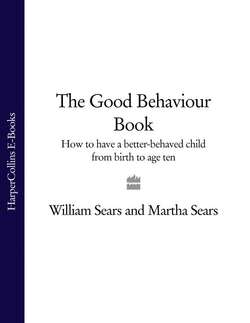Читать книгу The Good Behaviour Book: How to have a better-behaved child from birth to age ten - Martha Sears - Страница 55
providing structure
ОглавлениеWhen your child reaches one year of age, another tide is added to the parenting job description: architect of your child’s environment. By taking on this job you steer the child’s energies toward enjoyable learning experiences and away from harm. You create structure, which does not mean being inflexible, repressive, or domineering. On the contrary, what we mean by “structure” is setting the conditions that encourage desirable behaviour to happen. Structure protects and redirects. You free the child to be a child and provide the opportunity to grow and mature. Structure creates a positive environment for the child. By a bit of preplanning you remove most of the “nos” so that a generally “yes” environment prevails.
Structure changes as the child grows. At all developmental levels restructuring the child’s environment is one of your most valuable discipline strategies. When your infant reaches the grabby stage, you are careful to set your coffee cup out of his reach. When your toddler discovers the toilet, you start keeping the lid latched or the bathroom door closed. The preschooler who fights going to sleep at night gets a relaxing bedtime routine. The nine-year-old struggling to keep up with her homework gets a quiet, enticing place to work in, as well as firm restrictions on school-night television. Structure sets the stage for desirable behaviours to override undesirable ones.
Create a toddler-friendly, toddler-safe environment. Toddlers get frustrated easily trying to live in a house furnished only for bigger bodies. Your role as designer of your child’s environment involves making your house safe for your toddler and safe from your toddler. Toddlers are full of interest. Your job is to facilitate that interest safely. This is much easier to do at home, of course. When a child sees something enticing and sparkly, he will naturally want to touch it. It’s the parent’s job to get down and help the child explore that object without damaging it, or himself, and then redirect the child’s attention.
Putting away the breakables and the family heirlooms in your home is not a capitulation to toddler power; it is simply a way to avoid having to be constantly on guard and having to always say no to your child, causing a build up of frustration and anger in both of you. This is a much better alternative to being ever watchful and protective, or punitive toward a natural urge to explore. You, as the adult, have the maturity to put your own things aside (up or away) for a while until your child has the maturity to respect adult valuables. Keep in mind that this is only for a short time. We found that when our babies mastered crawling, we had to remove all our plants from floor level. Six months later we put the plants back down and the babies completely ignored what had been irresistible before. When your child starts to crawl, take a tour of your house from his perspective to discover what needs childproofing. There are many inexpensive products available that will help you make your home safe for your child (toilet seat latches, door-knob covers, drawer and cupboard latches, electric socket and plug covers, and so on). These and some ingenuity will enable you to protect your little scientist. Effort spent baby-proofing your home will pay off in less conflict with your toddler. Plus, you will be more relaxed parents. Childproofing also provides your young explorer with guidance from the controlled environment itself. Here’s a room-to-room guide to start with:
